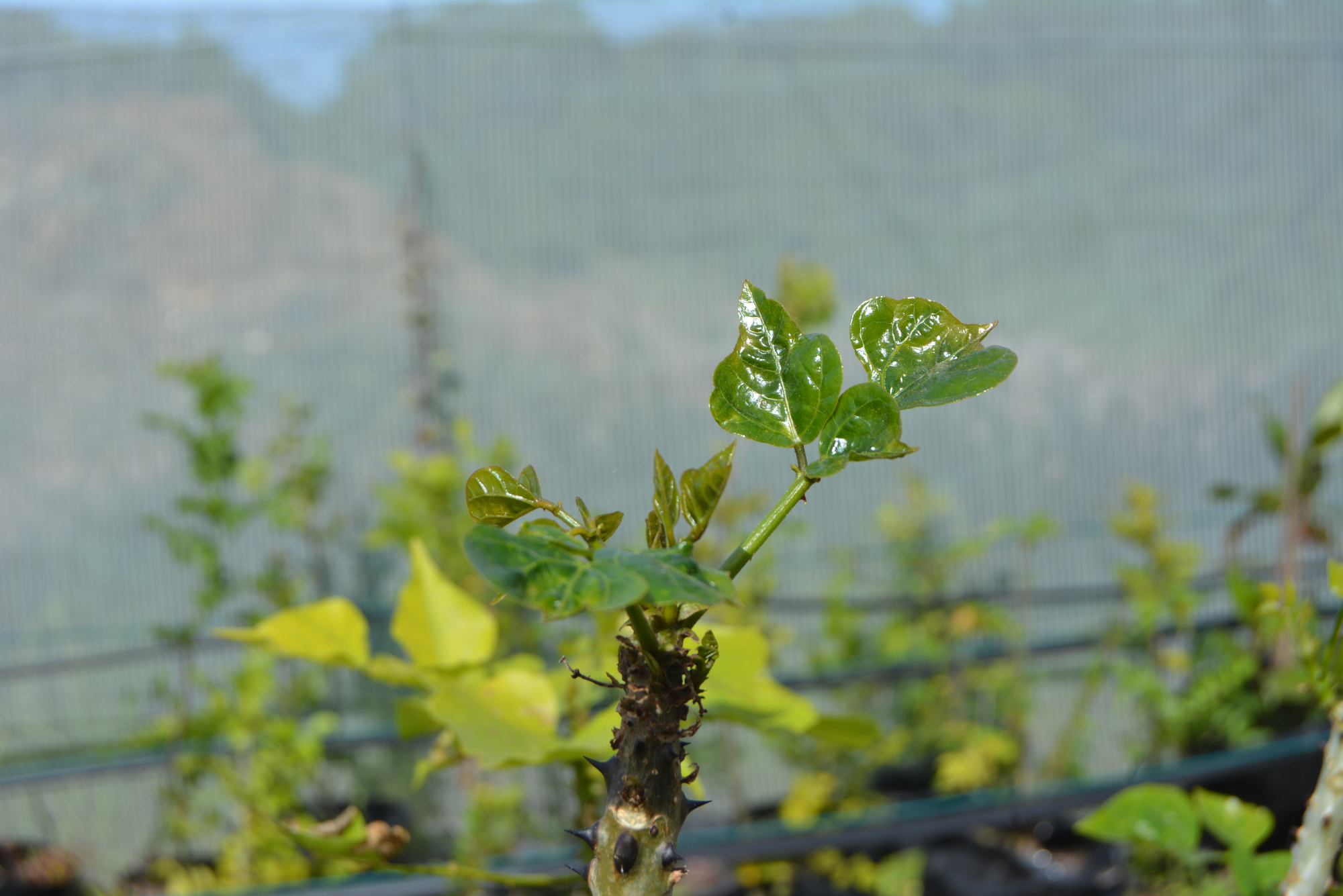A nursery that is bursting at its seams with trees and shrubs is evidence of the work being done to promote indigenous flora at Sardinia Bay Golf & Wildlife Estate.
Under the care of estate manager Hugh Wiblin, this is part of a long-term plan by the Homeowners’ Association to reclaim the natural environment from alien plants introduced to the region many years ago.
He says one of their practices is to secure plants when plots on the Gqeberha estate are cleared.
“Once they have cleared the bush, we go in to see what is available and then take those to the nursery to stabilise and to grow for future use.
“We grow the trees to about one to one-and-half metres in the nursery because if they are smaller than that you find the animals destroy them because of the sweet leaves.”
Wiblin says the programme for transplanting indigenous flowers, shrubs and trees does not follow particular seasons.
“You do get the spring growing season but you also get a lot of plants that do well in winter,” he says.
“My feeling is that the roots grow in winter and the leaves come out in spring, so we often plant them out in winter.
Their aim is to constantly fill bare patches around the estate with trees and plants, he says.
Over the past five years the estate has had a 90 per cent success rate with its replanting project.
Wiblin underlines the need to plant trees and bushes endemic to the area while gradually clearing the coastal estate of invaders.

“Indigenous plants do not take up the nutrients in the soil as much as the aliens,” he says.
“For example, Port Jackson, rooikrantz, black wattle and blue gum grow much faster and spread quicker and will take over a hectare of bush within 10 years.
“The problem is they don’t need a lot of water, so they survive quite easily.”
He adds that alien vegetation kills the plant life around it and absorbs nutrients from the ground while producing micro-organisms that are not conducive to the growth of indigenous flora.
Contact me please
Their plan, says Wiblin, revolves around natural revival of the bush through the distribution of seeds by the wildlife.
“We have what we call pioneer plants such as thorn trees which grow first and then you have the slower-growing types such as the milkwood.”
Birds eat the milkwood berries and redistribute them, allowing them to grow in new areas.
“Over time the milkwood grows higher to provide shelter and protection for animals while the thorn tree falls down,” says Wiblin. “Then the whole circle is repeated in another area.”
Indigenous plants also have medicinal value for the estate’s animals, with the springbok population a prime example.
“They are grazers and generally eat grass but in this area they have adapted to feeding off bushes as well,” he explains.
“They don’t necessarily have the genetics for that and it’s just nature’s way that they have learnt which plants to eat when they are feeling uncomfortable.”
Wiblin adds that another benefit of indigenous plants is that they are drought resistant.
“We don’t have to water here because they can survive even the worst drought. They may look thirsty, but all they need is a mist or a light drizzle and they are able to bounce right back.”
It is essential that only indigenous plants grow in open spaces to retain the natural environment in the area.
“We’ve made progress in recent years, but we still have a long way to go,” says Wiblin.
